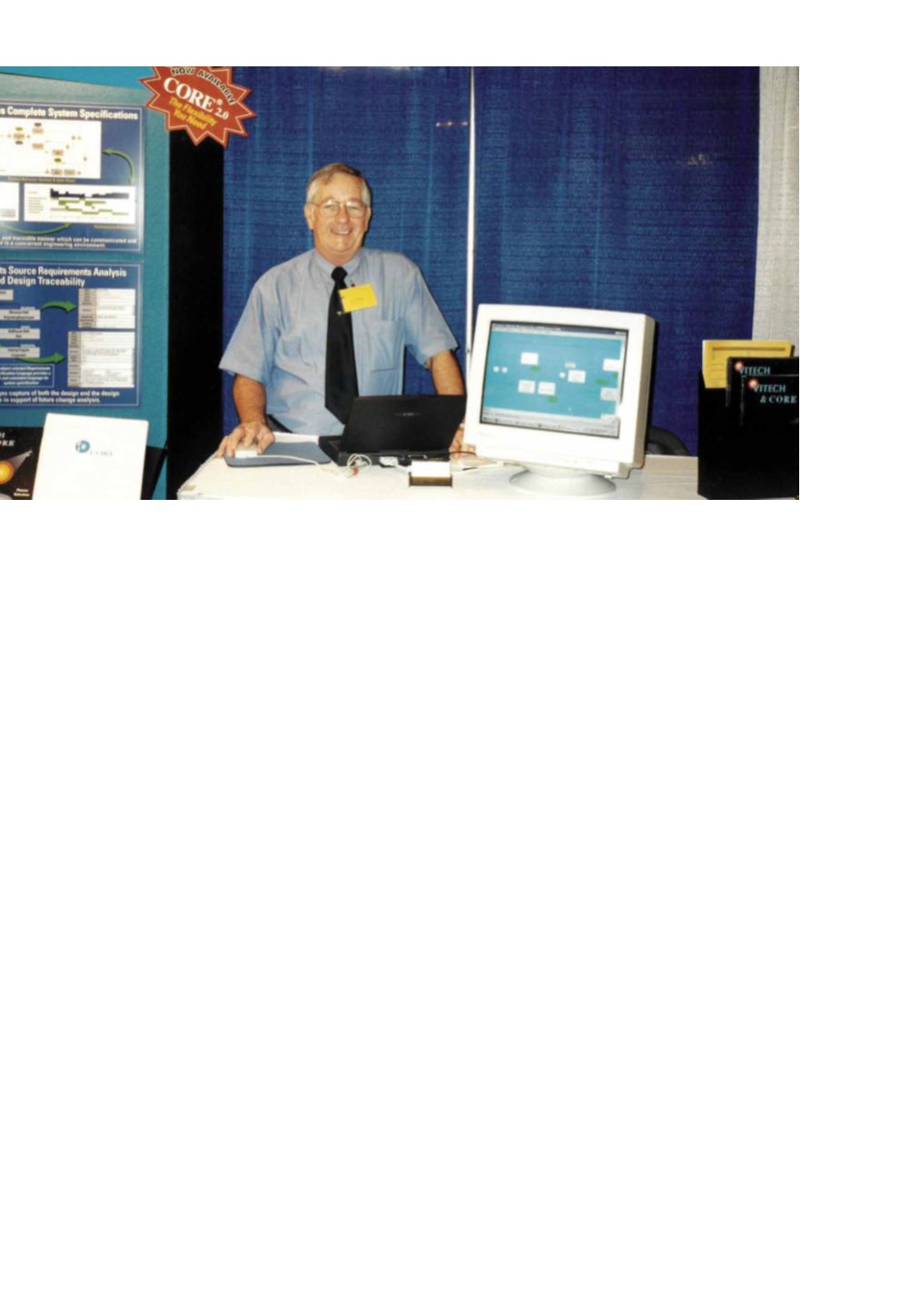

ignored). Second, process models were developed
to clearly capture the processing steps and, more
importantly, the associated data as flood insurance
policies moved through the system. Team members
on this project, from both the company and Vitech,
made giant maps of company processes that they then
taped to the wall so they could visualize the program
and discover any hiccups. Testers took colored pencils
and followed the process on the maps around the
room, identifying duplicate test paths that could be
dropped to save time, and unaddressed paths for
which new tests were written.
By using CORE, the company was able to reengineer
their systems in only a couple of months, addressing
both the Y2K problem and the issue of their
unwieldy and uncoordinated insurance policy
processes. In addition to spending less time on the
problem, the company was able to design better
coverage by addressing the gaps they discovered.
Without systems engineering, there is little doubt
that they would have been unprepared to serve clients
on January 1st, 1997.
Terry Deecke, Vitech’s Australian value-added reseller, staffs the Vitech booth at
the 1998 INCOSE International Symposium in Vancouver, British Columbia.
9
















